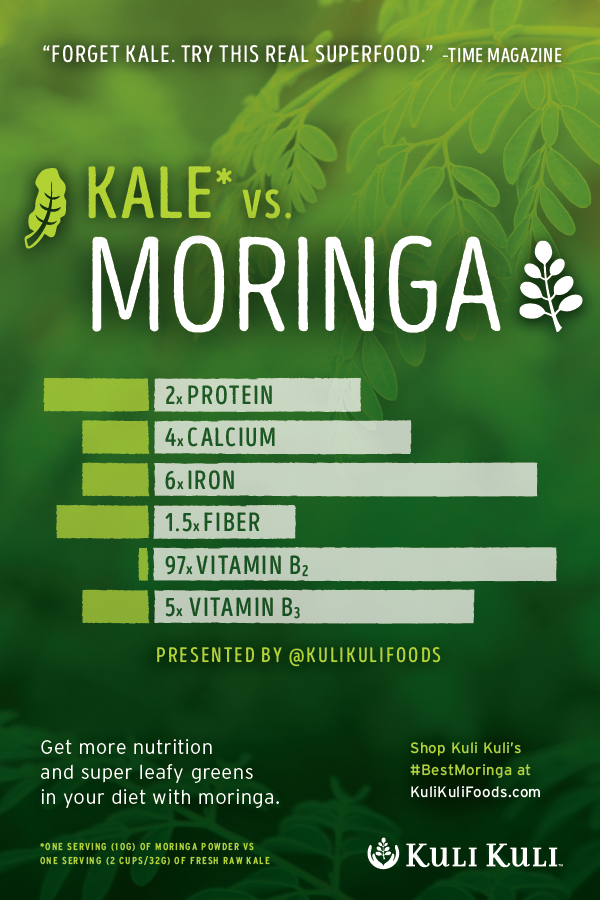
In recent years, kale has exploded onto the health and nutrition scene. Dubbed an ultra nutrient-dense superfood, with many even calling it the most nutritious plant in the world, it’s no wonder that the leafy vegetable has gained so much attention. The hype isn’t exaggerated much, because kale really is extremely nutrient dense– it has a vast array of vitamins, minerals, and even protein.
But the question remains: how does the lesser-known superfood moringa stack up against nutritional heavyweight kale?
Kale
Kale is a leafy green vegetable and is closely related to brussel sprouts, broccoli, and cauliflower. It is found in a wide variety of places around the world and is especially prevalent in Europe and the United States. Kale is also widely available in most grocery stores and is pretty versatile as it can be served steamed, boiled, or raw.
Nutritionally, Kale is touted for its high levels of iron, calcium, beta carotene and vitamin C, as well as being a plant source of protein. Additionally, the carotenoids and phytochemicals in kale may protect against certain diseases, including cancer.
Moringa
In the world of superfoods, moringa is often hidden by kale’s long shadow. However, it deserves much more attention! A slender tree, moringa boasts nutrient dense leaves, which can be boiled in soups and tea or can be left out to dry and turned into shelf-stable nutritional powder. This powder can than be added to a wide variety of different dishes.
In several areas the nutritional profile of kale and moringa contain several similarities. Moringa also contains high levels of iron, calcium, beta-carotene, Vitamin C and is a good source of plant protein, while additionally boasting high levels of B vitamins. However, unlike kale, moringa contains three flavonoids, which have been studied extensively for their role in protecting against heart disease and cancer, as well as having anti-inflammatory properties.
To break it down visually, here is a comparison between the two leafy greens:
A side-by-side comparison shows that moringa provides a better source of plant protein by more than a factor of two, while also being about 25% higher in Calcium. Kale takes the prize in fiber content and vitamin A, however both Kale and moringa have a significantly higher levels of vitamin A than carrots – a vegetable typically noted for its high amounts of vitamin A. Both kale and moringa are good sources of iron, but moringa wins this round by containing roughly 3 times more iron than kale. Lastly, moringa contains at least 2 times the amount of B vitamins than kale.
Overall, moringa and kale are nutritionally similar and both have a much higher nutritional content in most categories compared to other foods (making them ‘super’). The higher protein, iron, and calcium content of moringa, as well as the higher concentration of the all-essential B-vitamins, at the very least, put moringa on the map to give kale a good run for its money as the most nutritional plant in the world.









Seen u on CNBC just now have you contacted fresh thyme market they may be interested would love to try one of ur products.
I love kulikuli moringa.I purchased it at freshthyme.